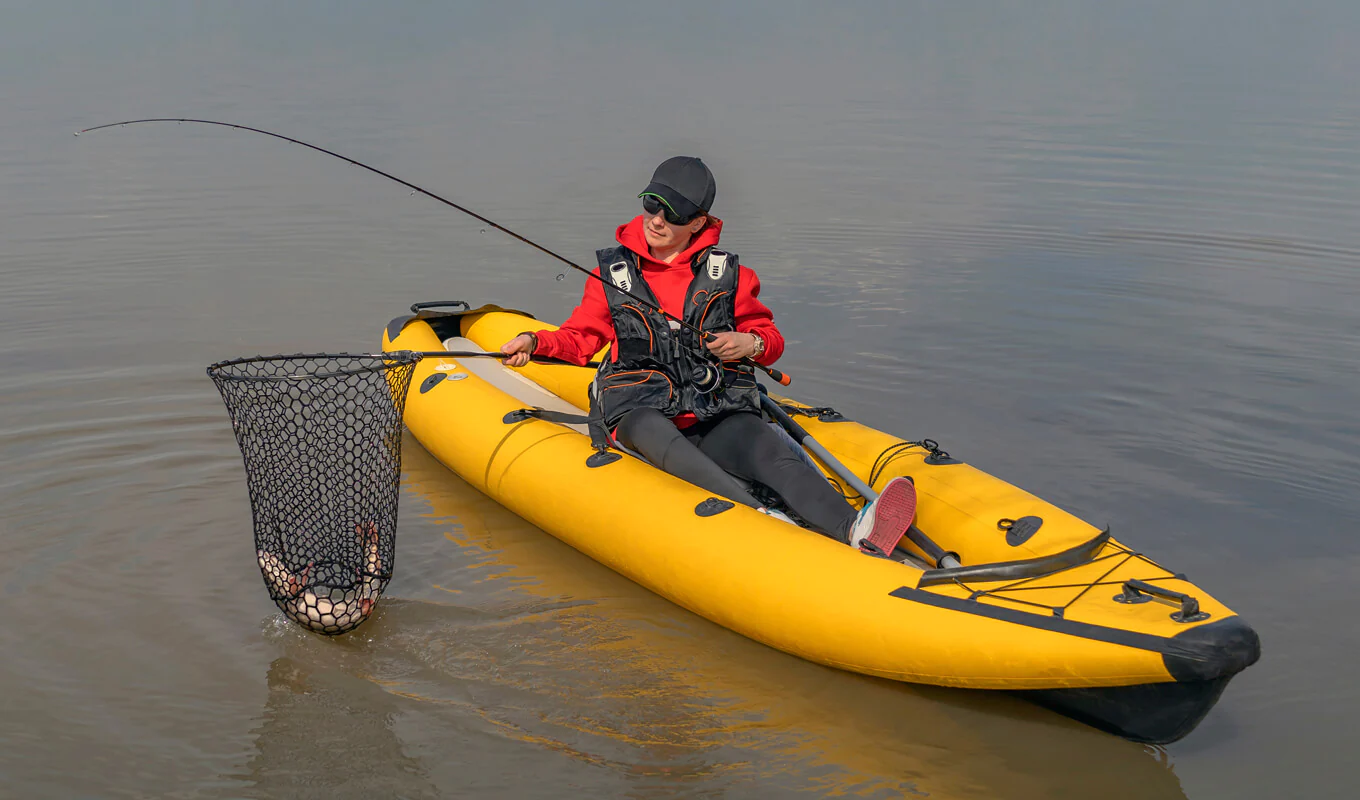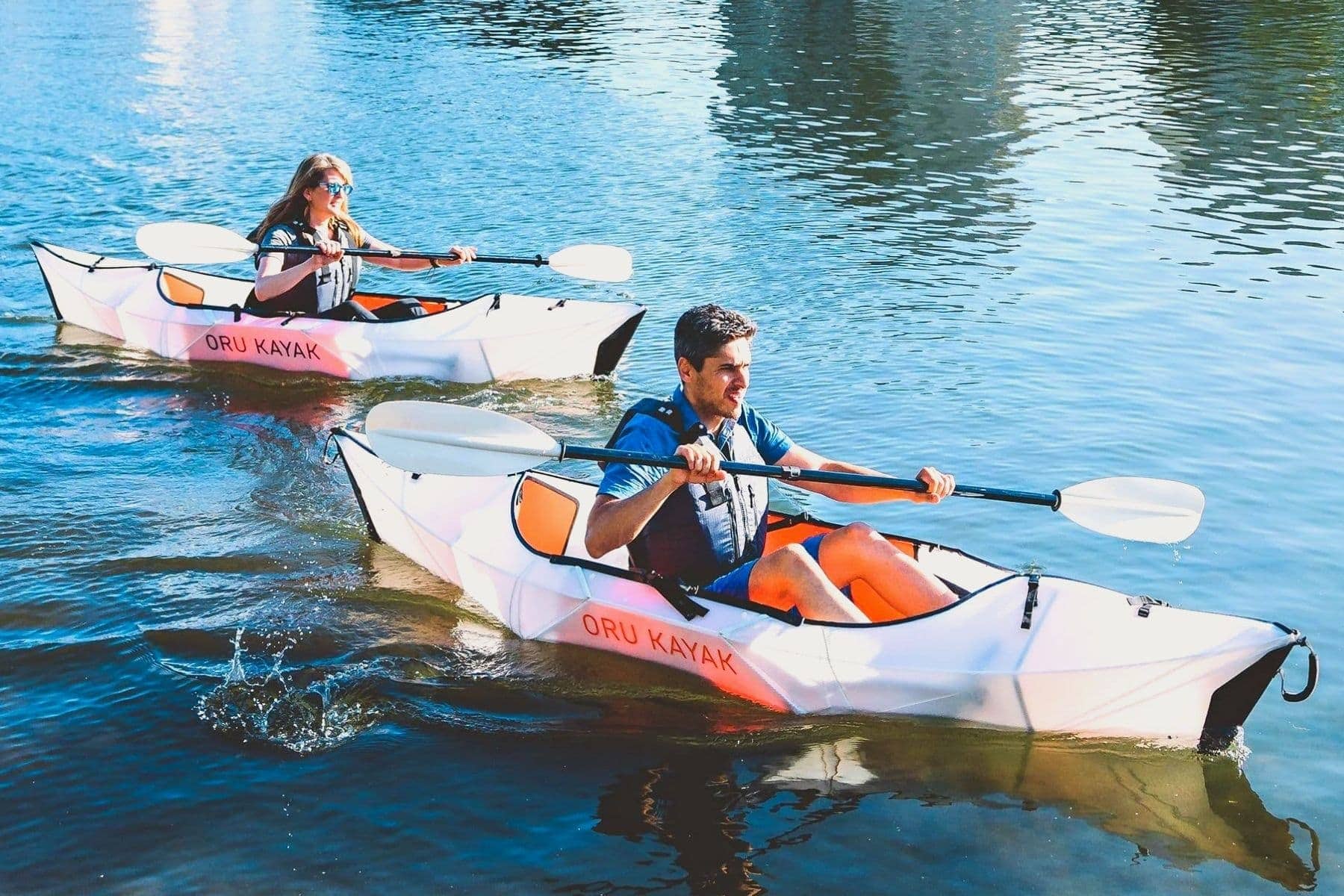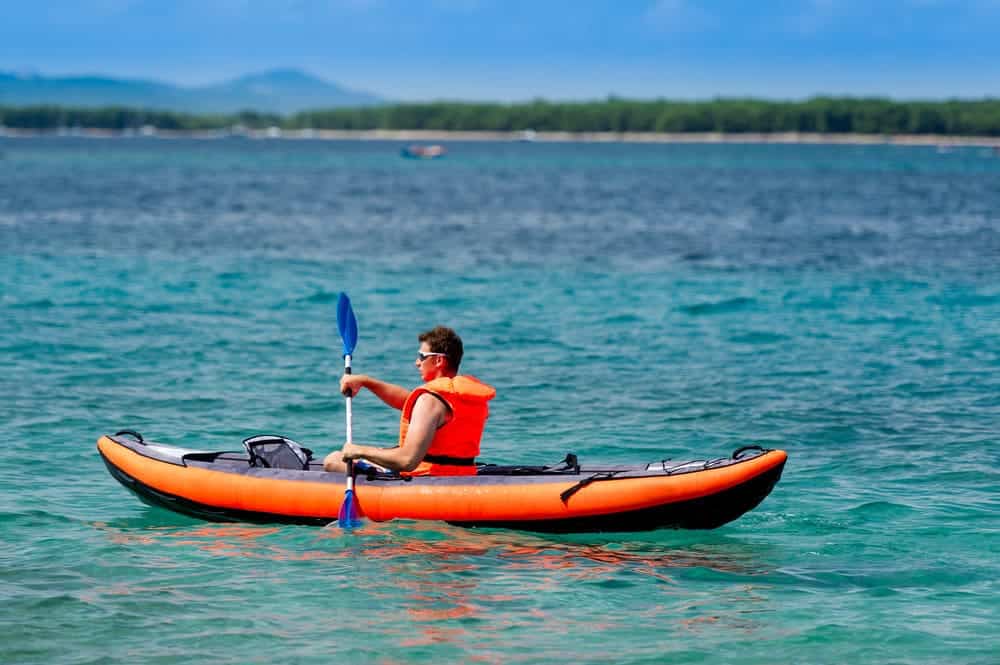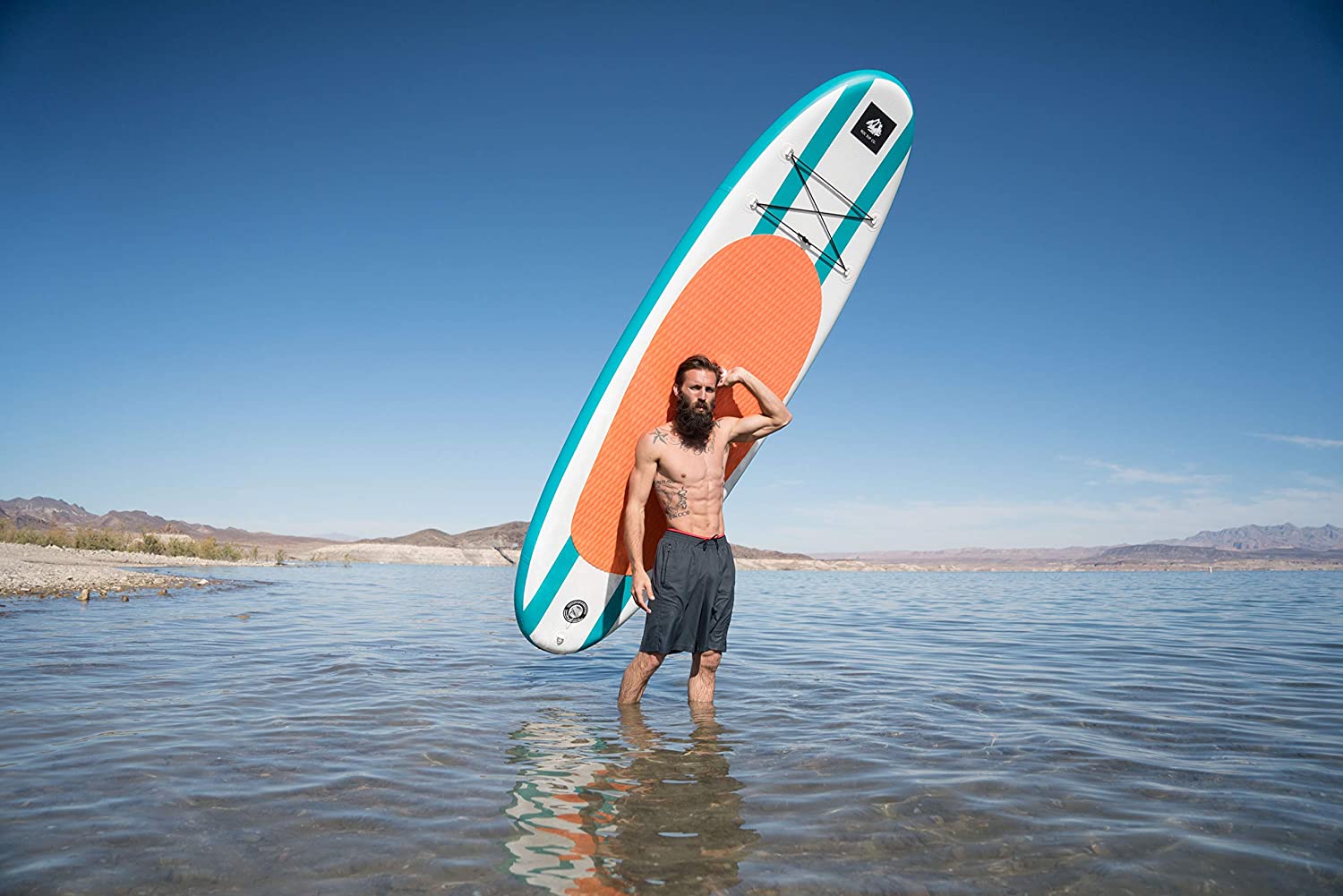
ADVANCED ELEMENTS AdvancedFrame Inflatable Kayak
The Advanced Elements AdvancedFrame Kayak is packed with impressive features. It comes with bungee deck lacing and D-ring tie-downs, allowing you to secure your gear easily. The inflatable coaming and neoprene paddle guard enhance your comfort while paddling. The folding seat provides excellent support and can be adjusted to your liking. With its welded seams and spring valve, this kayak ensures durability and easy inflation. It also comes with a tracking fin, which improves its stability and maneuverability.
Specifications:
Person: 1
Length: 10' 5"
Width: 32"
Weight: 36 lbs / 16 kg
Maximum Weight: 300 lbs / 136 kg
Chambers: 7
Folded Dimension: 30 x 17 x 13"
Please note that this product can only be shipped within the United States.
This kayak stands out with its built-in aluminum ribs that define the bow and stern, improving tracking. It is constructed with three layers of material, making it extremely puncture-resistant. The convenience factor is high as it comes preassembled at the factory. All you need to do is unfold, inflate, and attach the seat. The adjustable padded seat provides exceptional comfort for extended periods of paddling. The kayak's performance is comparable to a rigid hard-shell kayak while offering the portability of an inflatable.
Now, let's address some commonly asked questions:
Took Rosebud out of Channel Islands Harbor around the breaker, Santa Cruz Island Prisoners Cove, and out of Ventura Harbor, California. Responds to wind, use that to your advantage - don't go out WITH the wind, go out against the wind and have an easy ride back instead of coasting out, get exhausted and have to fight your way back. ALWAYS use a paddle leash. I used 6' light but strong marine line with a bowline tied to paddle and to a ring that has the elastic. If you don't trust your knot tying, get a paddle leash with the hardware.
I bought mine for the express purpose of using it as a fishing platform. It is usable but you need to be very careful with hooks and knives. I guess that goes without saying.... I keep my fish on a stringer tied to the kayak or just release them. I leave my tackle box in the car and just bring one or two P---o organizers for tackle. I strap a net on the foredeck and attach a rod or two alongside the kayak, which keeps them out of the way when paddling. There is also a small mesh pocket on the back of the seat that will hold a few items. All in all, it works well enough, and the biggest plus is that the kayak fits in the trunk of the car for transport.
I bought the backbone, and it is VERY helpful for rough seas. If you are in flat water, you don't need it, but you do for any ocean kayaking.
Yes, all kayaks are fully inflated, pressure tested, and inspected for a period of at least 24 to 48 hours before being packaged.
Frequently Asked Questions
How does it handle in open waters? I want to use it to go out in the harbor.
Took Rosebud out of Channel Islands Harbor around the breaker, Santa Cruz Island Prisoners Cove, and out of Ventura Harbor, California. Responds to wind, use that to your advantage - don't go out WITH the wind, go out against the wind and have an easy ride back instead of coasting out, get exhausted and have to fight your way back. ALWAYS use a paddle leash. I used 6' light but strong marine line with a bowline tied to paddle and to a ring that has the elastic. If you don't trust your knot tying, get a paddle leash with the hardware.
I have one of these, but was wondering if anyone has gone fishing in it? Was it difficult?
I bought mine for the express purpose of using it as a fishing platform. It is usable but you need to be very careful with hooks and knives. I guess that goes without saying....I keep my fish on a stringer tied to the kayak or just release them. I leave my tackle box in the car and just bring one or two P---o organizers for tackle. I strap a net on the foredeck and attach a rod or two alongside the kayak which keeps them out of the way when paddling. There is also a small mesh pocket on the back of the seat that will hold a few items. All in all it works well enough and the biggest plus is that the kayak fits in the trunk of the car for transport.
does it come with the backbone
I bought the backbone and it is VERY helpful for rough seas. If you are in flat water you don't need it but you do for any ocean kayaking.
are these tested before shipping?
Yes, all kayaks are fully inflated, pressure tested, and inspected for a period of at least 24 to 48 hours before being packaged.





![Cheap Kayaks For Sale Under $200 [Updated 2026]](https://shared-bucket-websites.s3.amazonaws.com/EconomicalKayaksForSaleUnder200LetUsTakeALook-1657574912497)






